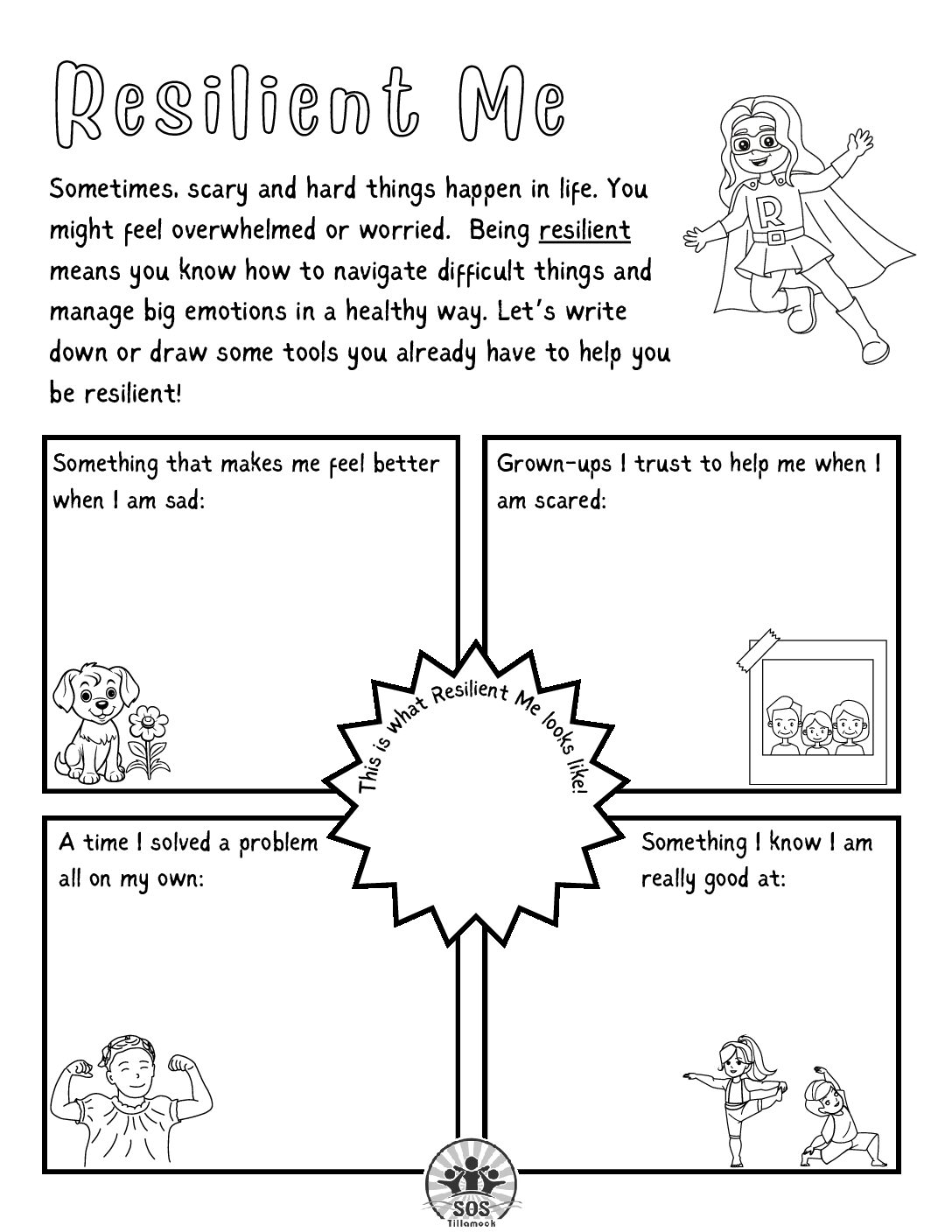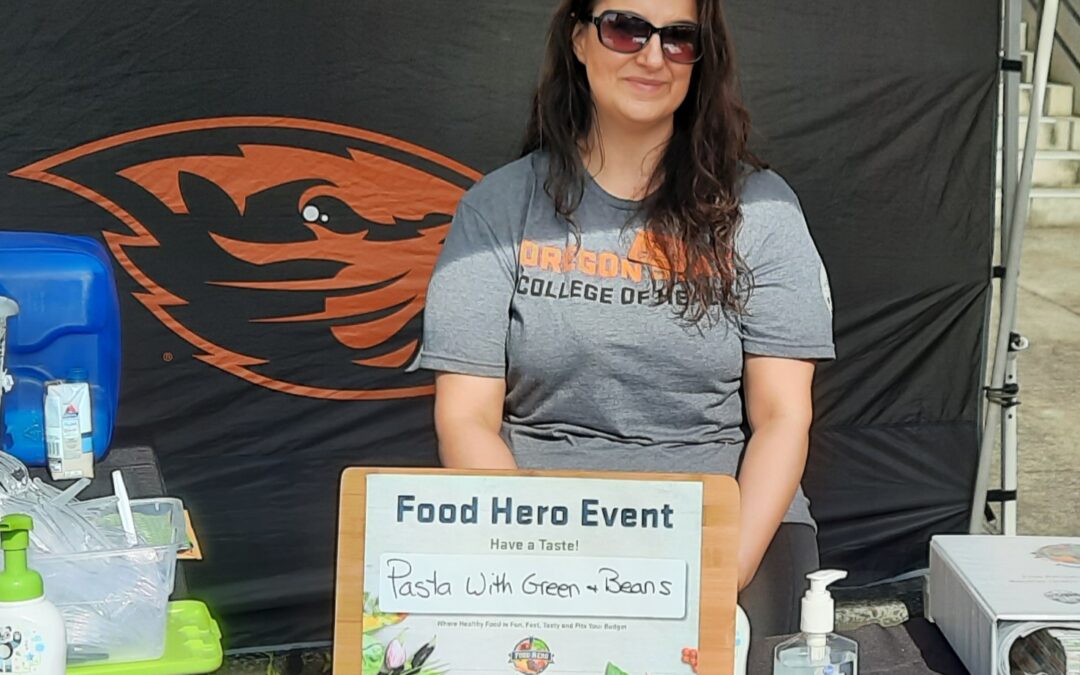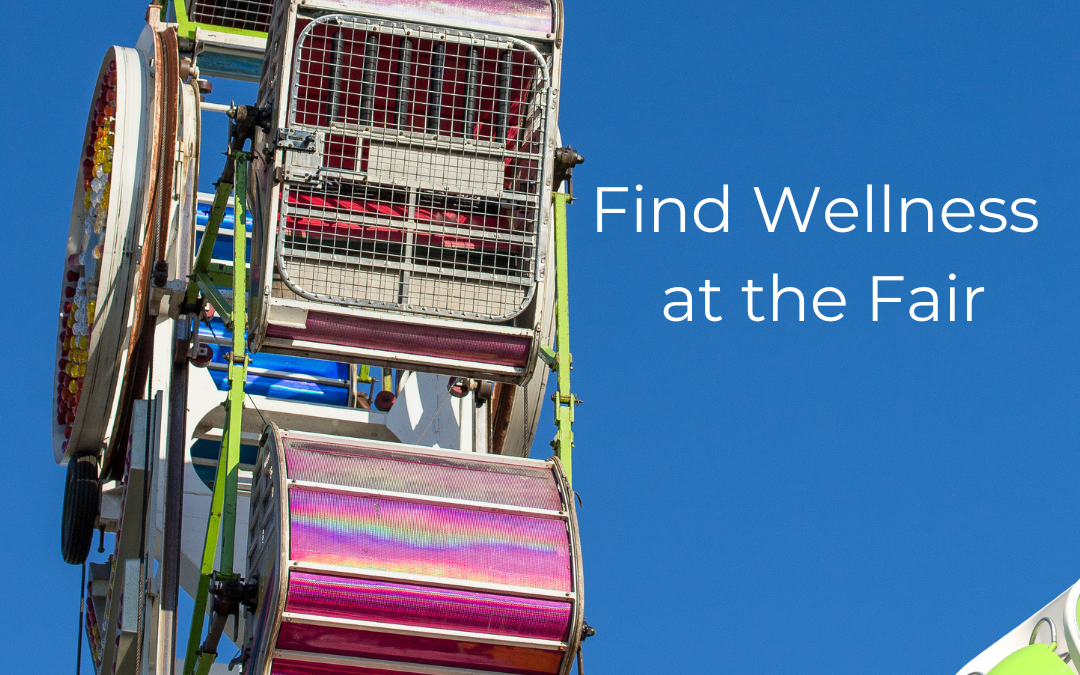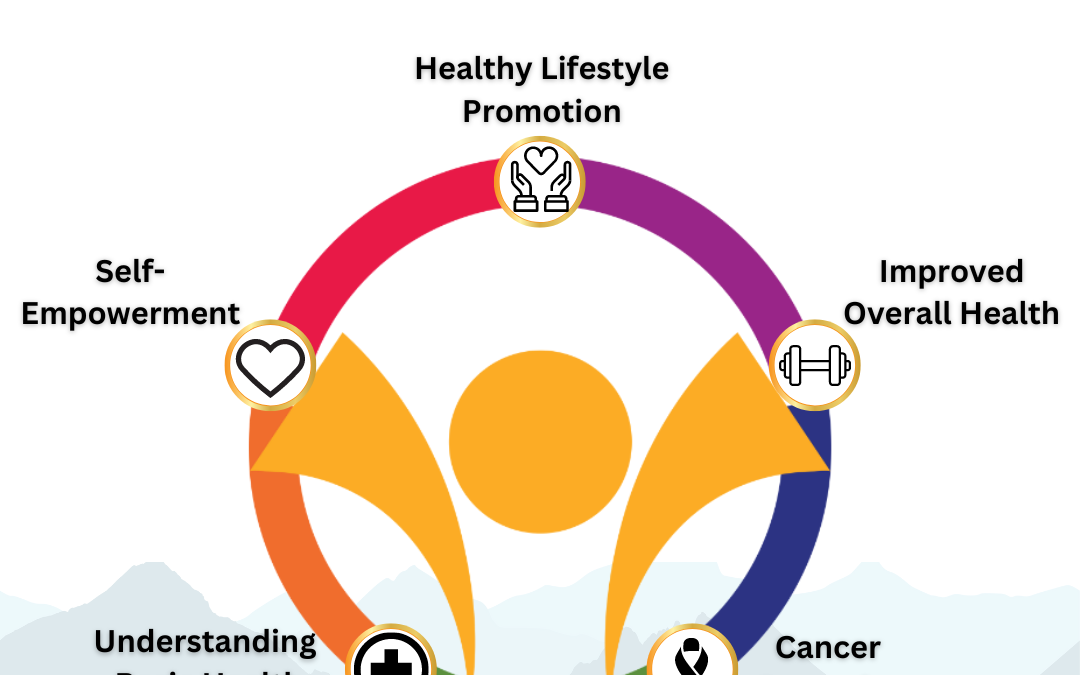
by Guest | Oct 11, 2024 | Being Well, Featured, Uncategorized, Work Well
Let’s face it: Whether you’re a single parent, have a supportive co-parent, or are part of a large, supportive family system, parenting well is hard. Kids, no matter how much we love them, don’t come with instruction manuals and often push us to our limits.
We want to bring our best selves to this parenting endeavor; we know how we treat and invest in our children will have lifelong repercussions . . . but sometimes we need a little support.
Engaging your child resourcefully, creatively, and educationally, boosting and encouraging playful curiosity, and celebrating developmental milestones—that’s what our family educators do every day. We believe that parents are their kids’ first and best teachers and we want to equip parents to engage their kiddos with creative, fun learning activities all year long.
Did you know that year-round support from Healthy Families and Early Head Start is available to families in every part of Tillamook County? Here’s what you need to know about our three Child & Family Programs, all housed under Community Action Team:
Healthy Families:
– Register your child within 90 days of birth
– Known for their diaper program
– Regular home visits, frequency of visits based on need
– Healthy Families – Community Action Team (cat-team.org)
Early Head Start:
– Registration accepted year-round, ages 0-3
– Weekly home visits
– Biweekly socializations/play dates
– Educational and literacy focus
– Seamless transition to Head Start (preschool, ages 3-5)
– www.nworheadstart.org
Head Start:
– preschool (drop off/pick up)
– only available to families living in Tillamook proper at this time
– 2 locations: 1100 Miller Ave, Tillamook, OR and 3808 12th Street, Tillamook, OR
– www.nworheadstart.org
We are a resource for you and want to make your parenting journey a little less
overwhelming, so you can offer your kiddo your very best self!
To reach out and ask questions, please contact:
Christina Pfister
Family Advocate for Early Head Start
971-813-9450
cpfister@nworheadstart.org
Written by Christina Pfister, Family Advocate for Early Head Start
Other wellness questions? Email us at info@tillamookcountywellness.org. For more local health and wellness information, visit www.tillamookcountywellness.org or follow Tillamook County Wellness on Facebook and Instagram.

by Guest | Oct 3, 2024 | Being Well, Featured, Uncategorized
Over the last few weeks, I have been reading a great book about addiction*. Preventing addiction is, after all, the core of my work as a Prevention Specialist. One line in particular stuck with me:
“The prevention of substance abuse needs to begin in the crib—and even before then, in the social recognition that nothing is more important for the future of our culture than the way children develop.”
Whether we are talking about addiction, mental health, or any number of other health outcomes, a child’s early development lays the groundwork for their future wellbeing. The notion that a child’s lifelong development is swayed by their earliest years can add a sense of urgency to days that are already strained in time and attention. The good news is that the conversations and daily interactions that parents have with their children are incredibly powerful in building resiliency, and that there are resources right here in Tillamook County to help parents explore what that means. But more on that at the end.
One side of the adolescent-substance-use-prevention coin is directly teaching kids about how alcohol and other drugs are harmful to their health. The Substance Abuse and Mental Health Services Administration’s (SAMHSA) “Talk. They Hear You.” campaign offers information for parents and caregivers on how and when to have conversations about alcohol and other drugs. Though it can feel like children don’t listen, the reality is that parents are among the strongest influences in their child’s decisions around substance use—they do hear you. Consider SAMHSA’s tips on age-appropriate conversations about substances:
- Under age 8: Explain the importance of good health and taking care of their bodies. If they take any vitamins or medications, explain that vitamins are to help them grow and medications are to help them be healthy. However, they should only take vitamins or medications that are given to them by a parent or caregiver, and taking someone else’s medicine could hurt them.
- Ages 8-12: Start asking open-ended questions, like what they have heard about alcohol or drugs. Let them know you are ready to talk if they ever have questions. Use “teachable moments”, like seeing alcohol or substances in movies, ads, or in stores, to explain that these substances are harmful to their bodies and health.
- Ages 13-16: Remember that many teens have peers or friends who may drink or use substances, so be ready to have direct conversations about what they have seen or experienced. Remind them that their brains are still developing until their mid-20s, and that avoiding substances is important to their health and growth. Clearly outline your family rules and expectations about underage substance use.
- Ages 17-20: Maintain clear rules that your child is never to use substances while they are underage or get into a car with a driver who has been drinking or using other drugs. Have conversations about adult responsibilities and decisions, and how they can continue to navigate substances and their health as they become an adult.
The other side of the adolescent-substance-use-prevention coin is, simply put, helping children build resiliency. The ability to manage stress and overcome challenges will serve children for their entire lives. This is certainly easier said than done. Many adults, myself included, struggle to consistently practice heathy ways of coping with stress. Fortunately, parents and caregivers in the Tillamook/Clatsop/Columbia region can take an Active Parenting class for free. This Active Parenting series will teach over 3 sessions: communication, problem-solving, discipline, family enrichment, and encouragement. Active Parenting provides an opportunity for parents to connect, while learning how to make the most out of those daily interactions and conversations with their children, how to pass on resilience, and how to focus on intentional, positive interactions and relationships with our children.
If you want to take advantage of the resources that are available to parents and caregivers, here is how you can find out more:
- “Talk. They Hear You.” webpage: samhsa.gov/talk-they-hear-you/parent-resources
- Active Parenting: The next Active Parenting series will be held on November 7, 14, and 21 from 6:00-7:45pm, via Zoom. To sign up, email MelissaCS@tfcc.org.**
- Parent and Caregiver Resource Workshop: An opportunity to connect with others to learn about and share information on resources available for parents, caregivers & children and why they matter. This workshop will be held on Tuesday, October 8 from 6:00-7:30pm, via Zoom. To sign up, email MelissaCS@tfcc.org.**
- “Resilient Me” is a coloring page for kids to help them identify the tools that they already have to help them be resilient. Download, print, and work through it together!
Be well, and happy fall!
* In the Realm of Hungry Ghosts– for any who are curious. Though first published 17 years ago, the content and propositions have largely stood the test of time.
**Mis is one of the amazing facilitators for Active Parenting, and is an invaluable resource for parenting education here in Tillamook County. Attending her sessions fills the soul!
Written by: Sarah Ermer, MPH, CHES; Prevention Specialist at Tillamook Family Counseling Center

by Guest | Sep 28, 2024 | Being Well, Eat Well, Featured, Lunch & Snack Recipes, Recipes
Healthier Snack Choices: At Home and in the Classroom
At Tillamook County Wellness, we believe that building healthy habits starts at home and continues in the classroom. Teaching children to make better snack choices is a valuable way to support their overall wellness. Here’s how families and educators can help kids make nutritious decisions every day.
At Home: Healthy Habits Start with You
Setting a positive example and providing nutritious options at home can empower children to make healthier choices. Encourage them to reach for snacks like fruits, vegetables, whole grains, and low-fat dairy. Involve your kids in snack preparation to make it a fun and engaging experience. Colorful combinations from different food groups can turn a healthy snack into an exciting treat!
It’s also important to teach children to listen to their bodies and let them decide when they are full. Reading food labels together is another great way to help kids avoid added sugars and unhealthy fats. By developing these skills early on, children will feel empowered to make healthier decisions throughout their lives.
In the Classroom: Creating Healthy Snack Environments
Teachers can play a significant role in fostering healthy habits by bringing nutritious snacks into the classroom. Providing fruits and vegetables as snacks not only encourages better eating habits but also normalizes healthy food choices among peers. Just be sure to check for any food allergies or school rules regarding snacks.
Keep things simple and cost-effective. Something as easy as a few apple slices or colorful bell pepper strips can make a big impact. You can also team up with other parents to provide a nutritious snack, like veggie sticks with ranch dip or a homemade trail mix with dried fruits and whole grain cereals. Working together ensures kids get balanced options at school and at home, helping them form lifelong healthy habits.
Fun and Healthy Snack Ideas:
- Crackers and salsa
- Bell peppers (in different colors)
- Applesauce
- Oranges
- Fruit cups
- Pears
- Tomatoes
- Yogurt
- Trail mix
- Cheese
- Bananas
- Apples
- Cereal bars
For more nutritious snack ideas and resources, check out Foodhero.org
By reinforcing these healthy habits at home and in the classroom, we help children build a strong foundation for their overall wellness. Together, we can create a healthier future for Tillamook County families!
Information for this article provided by Food Hero.
Other wellness questions? Email us at info@tillamookcountywellness.org. For more local health and wellness information, visit www.tillamookcountywellness.org or follow Tillamook County Wellness on Facebook and Instagram.

by Guest | Sep 16, 2024 | Being Well, Featured, Why I'm In
“WHY I’M IN …” An interview with Galena Flores, Program Assistant SNAP-Educator with Tillamook County Extension through Oregon State University and Tillamook Family YMCA
What drew you/your organization to partner with Tillamook County Wellness?
My first partnership with Tillamook County Wellness (TCW) was at the YMCA. Having lost my grandfather to diabetes, I became a Lifestyle coach teaching the National Diabetes Prevention Program, which was partnered with Tillamook County Wellness. They promote the program by helping recruit individuals at risk of developing type 2 diabetes. The year-long program taught individuals small lifestyle changes that would have a lasting impact on their health, reducing their chances of getting Type 2 Diabetes.
As my role in the community has changed, I have continued to work with TCW through different avenues and organizations. During my internship at the Tillamook County Community Health Center, I worked with TCW on a Health Literacy campaign that was published on the Tillamook County Wellness Facebook page and other social media platforms.
More recently, with my new role at Tillamook Extension, I have worked closely with TWC on different committees and projects, one of which is the Treasure Your Wellness map currently underway. I am also working with the Access to Physical Activity Committee as we work toward promoting the Salmonberry Trail and events like the bike rodeo and the Four Seasons of Forging events that will be going on in our community throughout the year.
What, if any, changes have you seen come about as a result of this work?
I have seen the prevalence of type 2 diabetes go down in Tillamook, along with the several established walking groups that are throughout the county and much more.
What have you learned from being involved in this work?
This community can do some very meaningful things by bringing different organizations together. I also learned about the Salmonberry Trail, which would be fantastic for our community, along with various other things.
What are your hopes for this work as it relates to you/your organization?
My hope is to empower our community to take control of their health. Through my work with Tillamook Extension, I am providing individuals with the resources and knowledge to be able to make informed decisions about their health. I hope to be able to impact my community with healthy recipes and knowledge about specific ingredients that they might not be sure about. I hope to be able to provide information to people about ways to be more physically active and feel more confident in the kitchen when preparing meals for themselves and their families. I hope to be able to encourage our low-income and underserved population on different ways to take care of themselves, which could be done by teaching them how to prepare nutritious meals with the items they are receiving at the food banks or educating them on different resources there are throughout the community they might not be aware of.
What are your hopes for this work as it relates to changing community health in Tillamook County?
I hope that people will be able to access the resources that my organization and TWC provide. I hope to truly impact our community in a positive way and inspire people to take care of themselves and, if possible, others.
Is there anything else you’d like to share?
TCW truly has its community’s best interest at heart, and many Tillamook County residents do not realize how much they are really affected by this organization. The work that is being done every day to improve this community’s health through different organizations is astonishing. I feel it is a beautiful thing, and we are so lucky to have such a grand coalition in our community.
Other wellness questions? Email us at info@tillamookcountywellness.org. For more local health and wellness information, visit www.tillamookcountywellness.org or follow Tillamook County Wellness on Facebook and Instagram.

by Michelle | Aug 10, 2024 | Being Well, Featured, Move Well, Uncategorized
August is a busy month! There are several free wellness activities coming up, some of which you can learn more about at the Tillamook County Fair.
“Treasure Your Wellness” Treasure Map: This interactive map can be found at the Tillamook Library bookmobile located near the Master Gardener’s garden by the east entrance of the fairgrounds. This fun, free, and family-friendly adventure runs From August 5th to September 30th . Explore wellness destinations like Activity Island, Be Well-Nourished Bay, Community Cove and the Isle of Inner Peace. Each location includes activity challenges —volunteer, cook a healthy meal, visit a rec center, start a savings account and more. Complete at least one activity on each island and you could win incredible wellness-themed prizes, like cornhole, pickleball, and disc golf sets or the grand prize of an ATX bike valued over $500! In addition to being available at the fair, maps can be found at local library branches, Kiawanda Community Center, Tillamook YMCA, North County Recreation District and Food Roots or on- line at This Way to Well-Being | Tillamook County Wellness.
Health Literacy Campaign: Materials from our recent health literacy campaign can also be found at the Tillamook Library booth at the fair. Bookmarks and other materials highlighting important health information like finding a primary care provider, getting vital health screenings and knowing when to visit your doctor, urgent care or emergency department, are just a few topics covered. You can also find more information here. Community Health Survey: When you visit the Library Bookmobile at the Fair, be sure to take our Community Health Needs Survey. Tell us what you and your family most need to live your best life and your areas of greatest concern impacting your health and well-being. You can also take the survey here.
Financial Wellness: Visit the Habitat for Humanity booth – located in the main pavilion building, under the stairs near the fair office – for community conversations on what financial health means to you. While you are there, learn more about first-time home buying and other ways you can work toward your financial goals. While you are at the Habitat for Humanity booth be sure to sign up for:
- FUNancial Wellness Event – Come to the Tillamook YMCA, Monday, August 19th, 2024, 5:00- 6:30 PM for food, fun and financial learning opportunities for kids 3rd -6th grade. This FREE event provides kids and families an opportunity to learn about saving, spending, growing and protecting money. Kids will take home more than just knowledge with free giveaways and prizes. Learn more and register for the event here.
- Sign Up to become a “FinLit” Financial Literacy Volunteer – This program relies on volunteers to deliver free curriculum from Financial Beginnings. Classes are held in English & Spanish at multiple community locations, including Tillamook Bay Community College, Helping Hands, and Trask High School.
Volunteers can commit to as many or as few classes as works for their schedule. To learn more or to register to become a volunteer, visit Financial Beginnings (finbeg.org). If we don’t see you at the fair, here are other ways you can get information about these and future wellness events.
AUTHOR: Michelle Jenck, Adventist Health Tillamook Director of Community Well-Being

by Renee Aufdermauer | Jul 26, 2024 | Being Well, Featured
As we close our Health Literacy campaign, we reflect on the vital role of personal health literacy in enhancing our community’s well-being. Personal health literacy is more than just understanding health information—it’s about effectively finding, interpreting, and using that information to make informed decisions for yourself and your loved ones.
Thanks to the support of the Knight Cancer Institute Community Partnership Program, we’ve been able to shine a spotlight on health literacy over the last 3 months. Our goal has been to help you understand how and when to access the best care for the best possible health outcomes. Here’s a summary of the key topics we’ve covered:
Take Charge of Your Health
Health literacy means making informed choices about your well-being. From understanding prescriptions to navigating healthcare systems, knowing how to make the best health decisions is crucial.
Your Primary Care Provider is Your Advocate
Regular check-ups with your provider are essential for maintaining health and catching problems early. Your primary care provider offers personalized advice, tracks your health history, and supports your well-being. Establishing a strong relationship with your provider ensures you receive timely care. Aim to visit your primary care provider at least once a year—don’t wait for issues to escalate.
Where to Go for Care and When
Understanding where to seek care is vital. For serious issues, head to the Emergency Room. For immediate but less severe concerns, Urgent Care is the place to go. For regular check-ups and ongoing health management, your Primary Care Physician is your go-to. Making quick and informed decisions ensures you receive the right care at the right time.
Your Health is Important, and So Is Your Voice
When visiting your provider, communicate openly. Share your concerns, ask questions, and discuss any symptoms or issues you’re experiencing. Your input is crucial—if you’re unsure about something, ask for clarification or explore other treatment options. Don’t hesitate to seek a second opinion if needed. Being actively involved in your healthcare conversation ensures you get the care you deserve.
Health Screenings for Cancer Prevention
Regular health screenings are essential for early detection and prevention of cancer. Early detection can save lives. Schedule screenings based on your age and risk factors to stay ahead of potential health issues. Knowing what screenings are recommended and when to get them can significantly impact your health outcomes and even save your life.
Stay Informed and Engaged
We encourage you to keep checking back on our website for ongoing information and resources. Your health is an ongoing journey, and staying informed is key to making the best decisions for your well-being. For more information on health literacy and resources available to you, visit https://tillamookcountywellness.org/be-well/health-literacy
By increasing your health literacy, you’re taking a significant step toward better health and a more informed approach to healthcare. Stay proactive, stay informed, and most importantly, take charge of your health!
For more local health and wellness information, visit www.tillamookcountywellness.org or follow Tillamook County Wellness on Facebook or Instagram.






